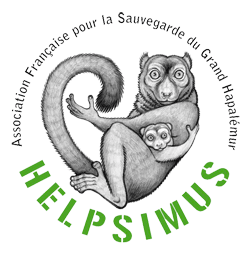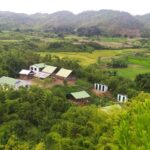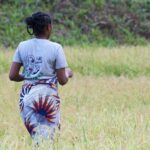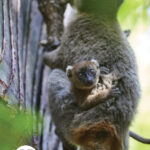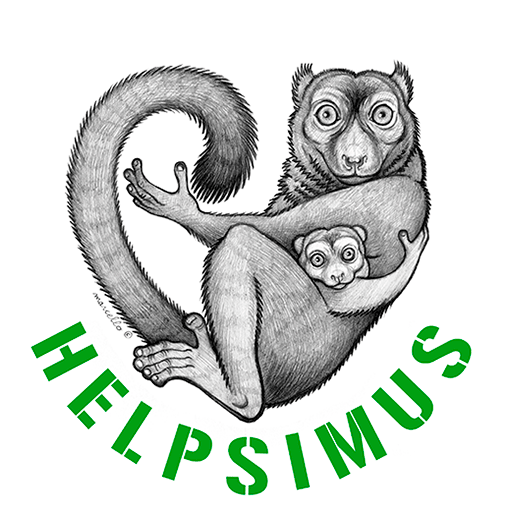Background of the captive population in Europe
The first pair of Prolemur simus was imported into Europe in 1987, followed by a second pair in 1994. The management of these animals was given to the Parc Zoologique de Paris (National Museum of Natural History) by the Malagasy government. The first pair never bred but the one imported in 1994 regularly gave birth till the death of the parents in 2006 and 2007. This second couple thus constitutes the founder pair of the captive population.
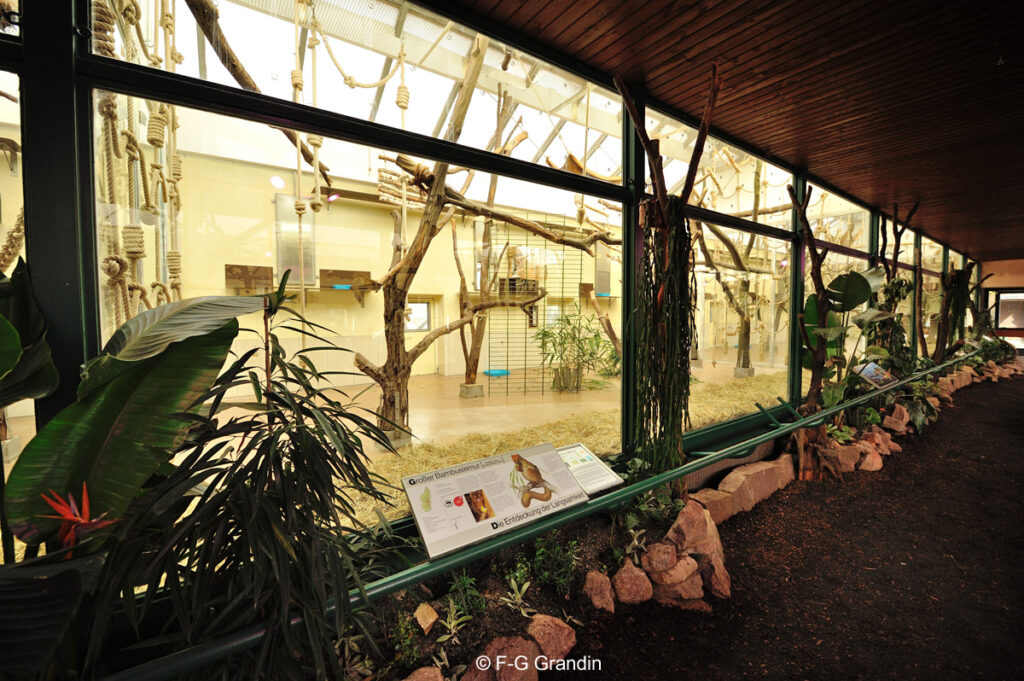
The first birth of Prolemur simus took place in 1995 in Paris. Twins were surprisingly born in 2000 whereas this had never been described for the species before! From 1999, thanks to regular births, Paris Zoo greater bamboo lemurs’ offsprings started to be sent to other zoos in order to develop the breeding of the species.
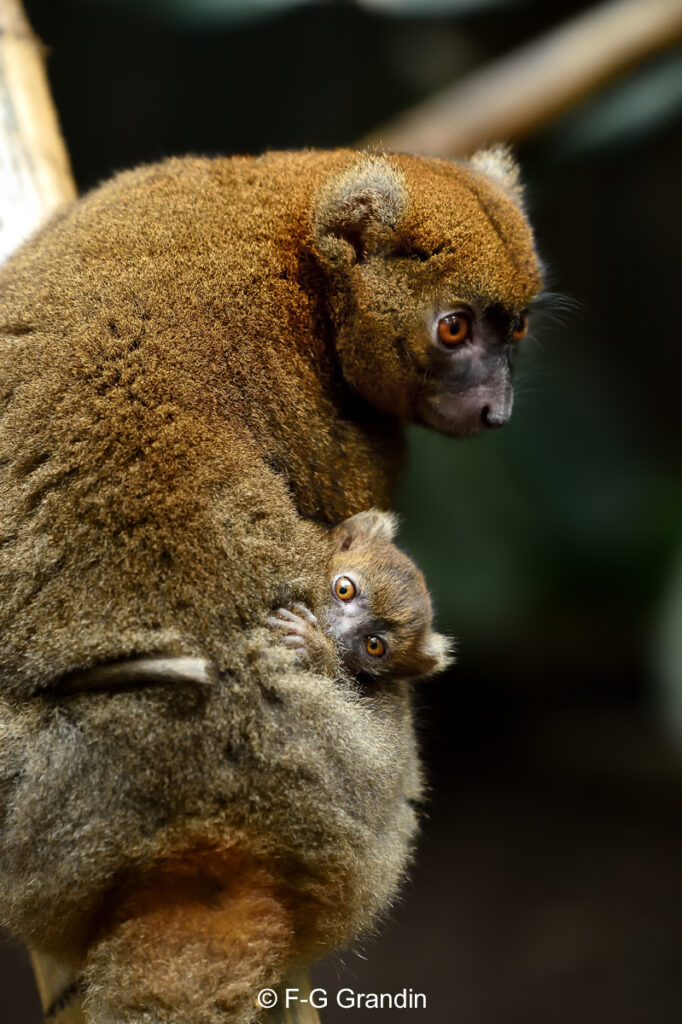
Today, although the European population still lacks founders (all individuals are related because they were all born from the same founder pair), it is regularly increasing thanks to an international management plan implemented since 2008 and that gathers captive animals from Europe and Madagascar.
Background of the captive population in Madagascar
Between 1995 and 2000, Ivoloina Zoological Park hosted 3 successive groups of greater bamboo lemurs: a first group composed of 2 males and 3 females, then 2 groups composed of 2 males and 1 female. All these animals were caught in Karianga area, west Farafangana in Madagascar. These captures were allowed byt the authorities in order to establish a captive population of greater bamboo lemur in Madagascar. Unfortunately, many individuals died without any offspring despite these captive breeding attempts.
A pair arrived in 2000 and gave birth to a male in 2006. The captive population in Madagascar currently includes 2.3 individuals (2 males and 3 females), all living in Ivoloina Zoological Park and managed in the framework of the international breeding program.
The European breeding program
 The European Association of Zoos and Aquariums (EAZA) that gathers more than 300 members in 35 countries created the European Breeding Programs (EEP) for endangered species in order to improve their management in captivity.
The aim of the EEPs is to promote the development of captive populations for the concerned species by maintaining their genetic diversity. Each EEP has a coordinator who is in charge of the species management. He/she has a deep knowledge of the species he/she manages and a good overview of the population. He/she recommends animals for transfers between zoos. He/she is assisted by a species committee generally composed of EEP members and advisors in various fields (conservation, veterinary medicine…) who can help him/her in decision-making.
The European Association of Zoos and Aquariums (EAZA) that gathers more than 300 members in 35 countries created the European Breeding Programs (EEP) for endangered species in order to improve their management in captivity.
The aim of the EEPs is to promote the development of captive populations for the concerned species by maintaining their genetic diversity. Each EEP has a coordinator who is in charge of the species management. He/she has a deep knowledge of the species he/she manages and a good overview of the population. He/she recommends animals for transfers between zoos. He/she is assisted by a species committee generally composed of EEP members and advisors in various fields (conservation, veterinary medicine…) who can help him/her in decision-making.
In 2007 Paris Zoo asked for the creation of an EEP for the greater bamboo lemur. The aims were to increase the captive population, to improve the breeding of the species and to contribute to its in situ conservation.
In May and August 2008, two missions were organized in Madagascar by Delphine Roullet, coordinator of the greater bamboo lemur EEP. Theses missions aimed to meet the people in charge of the conservation of the greater bamboo lemur in Madagascar in order to see how to help them, but also to implement a collaboration with the Madagascar Fauna Group (MFG), in charge of Ivoloina Zoological Park management, the only institution outside Europe to host and having bred the species
EEP conservation activities
Following the missions organized in 2008 and the meeting with Dr. Anna Feistner, several members of the EEP decided to get involved in the greater bamboo lemur conservation.
Costwold Wildlife Park funded a field mission which found a new group of Prolemur simus. This discovery resulted in the creation of the “Bamboo Lemur” programme, coordinated at that time by Dr. Anna Feistner. Today, many zoos (including almost all the EEP members), still fund this programme that led to the creation of Helpsimus.
Greater bamboo lemur workshop
In January 2009, the first EEP species committee took place in Port Lympne (Aspinall Foundation) in England. All the EEP members (i.e. all the zoos holding the species) and some veterinary medicine and conservation advisors (including Dr. An Bollen, MFG Director) participated to this important meeting that aimed to:
– share insights about the species and plan an international management strategy for the captive population (including the individuals kept in Madagascar),
– start discussions about the participation of the EEP to the in situ conservation of Prolemur simus in Madagascar.
When attending the meeting, the MFG became a member of the EEP, thus lying the foundations of an international management of the species.
Technical workshop on greater bamboo lemur conservation
In January 2010, the MFG organized an international workshop on greater bamboo lemur conservation in Madagascar, in order to have an overview of existing knowledge about the species and its situation in the wild for developing a comprehensive conservation strategy.
It thus became urgent to strengthen ex and in situ conservation actions to save this endemic species. On January 29th, the Ministry of Environment and Forest in Madagascar, the MFG/Ivoloina Zoological Park and the EEP signed a collaboration agreement in Antananarivo to facilitate animal transfers between the EEP et Ivoloina Zoological Park in order to optimize the global management of the captive population which strongly lacked founders.
In 2015, Helpsimus organized the 3rd International Technical Workshop on the species conservation in Ranomafana. It led to a new estimation of the global population of wild greater bamboo lemurs: 1,000 individuals.
Exchanging greater bamboo lemurs
A first transfer took place in May 2010: a female named Bekily was sent to Ivoloina to be paired with a male that was living alone. This transfer had been an historic event: only few lemurs were sent back to their native land!
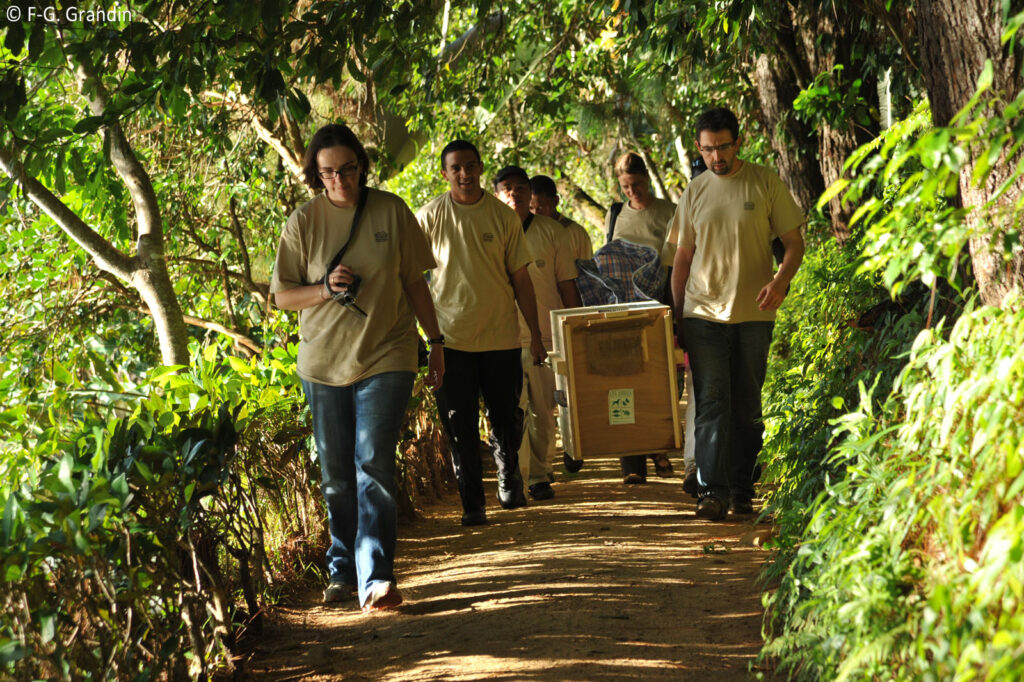
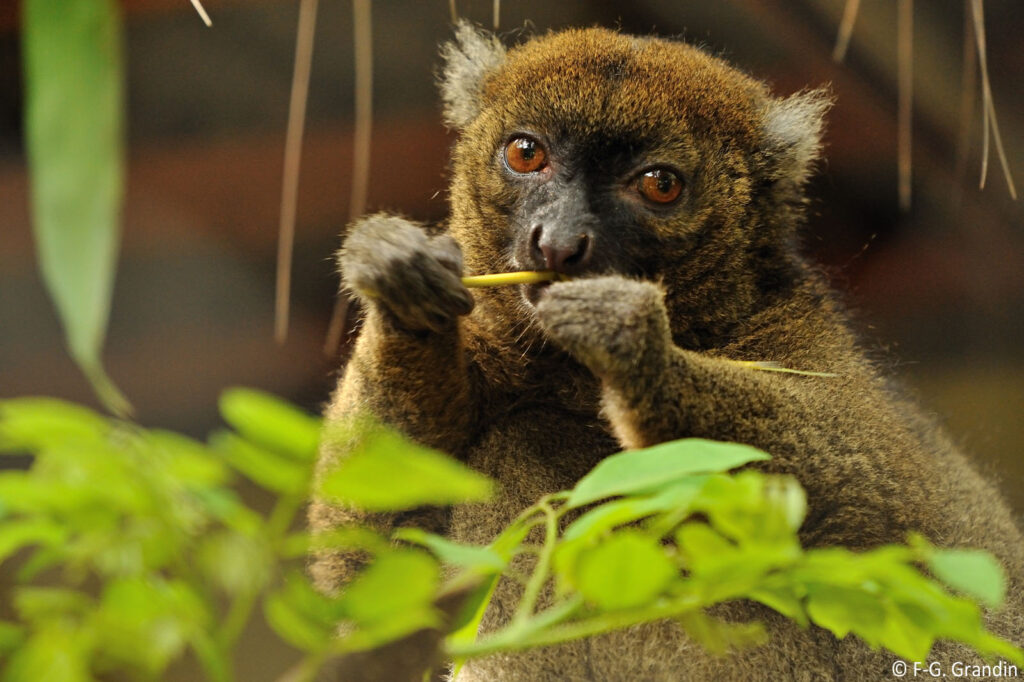
A male from Ivoloina Zoological Park named Raphael (descendant from the 2 animals born in the wild) was sent to the Museum of Besançon (France) to join Sorja with whom he has formed a successful breeding pair, thus ensuring new blood in the population. Sorja was the best breeding female of the captive population, justifying Raphael’s transfer to Besançon at that time. The Museum of Besançon is also the second institution in Europe to breed greater bamboo lemur and has therefore a solid experience with this species.
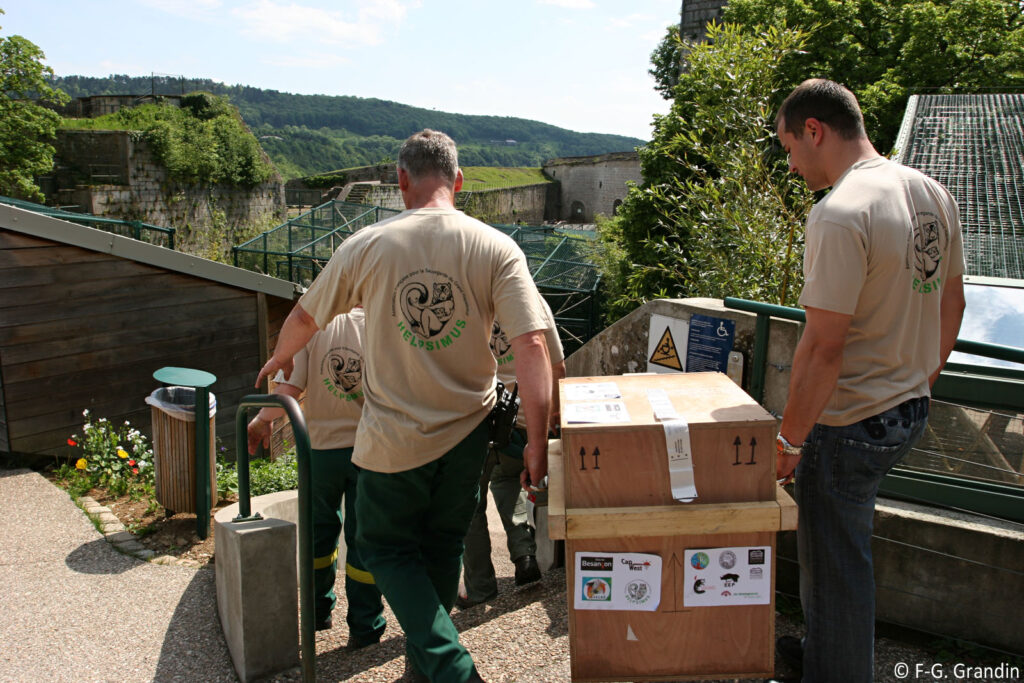

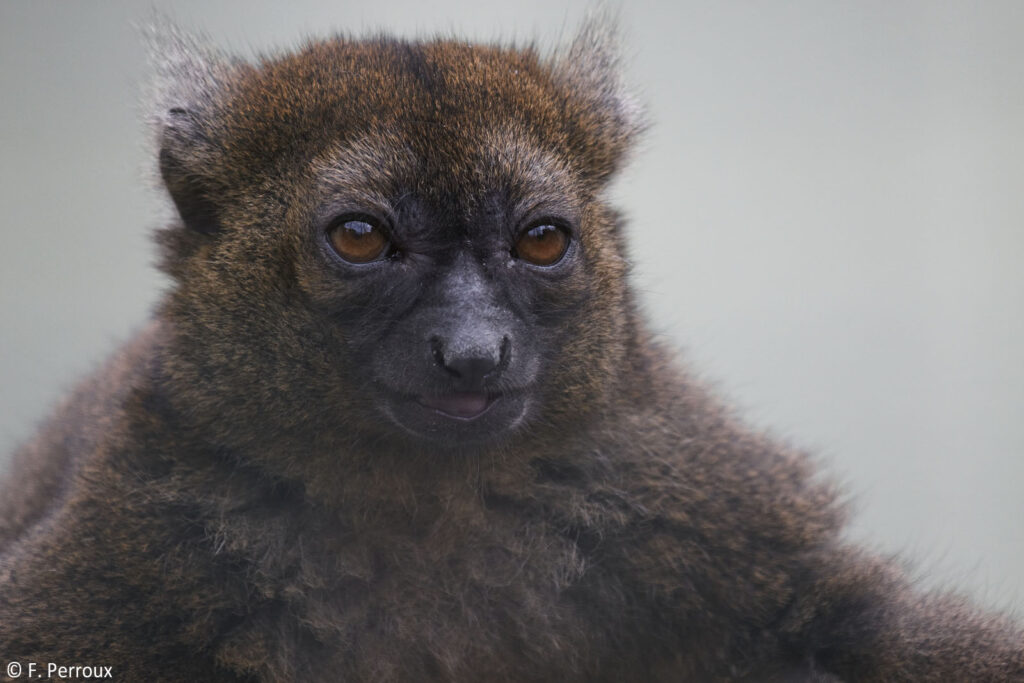
In 2011, another greater bamboo lemur flew to Madagascar: Thetys, a male born in Paris Zoo and who successively lived in Cologne Zoo and the Museum of Besançon, joined Bekily in Ivoloina.
These transfers between Europe and Madagascar contribute to the overall protection of the species. Maintaining a healthy captive population is indeed essential to its conservation in the wild. It also helps raising awareness and developping financial support for in situ projects.
